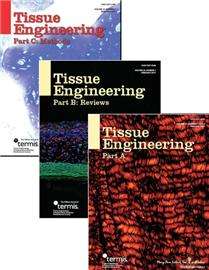Credit: Mary Ann Liebert, Inc., publishers
Researchers have designed a 3D-printed porous scaffold for use in reconstructing ruptured anterior cruciate ligaments (ACL) in the knee and engineered it to deliver a human bone-promoting protein over an extended period of time to improve bone regeneration. A study describing the composition of the scaffold and comparing different delivery methods for recombinant human bone morphogenetic protein 2 (rhBMP-2) is published in Tissue Engineering, Part A.
Joshua Alan Parry, MD, Sanjeev Kakar, MD, and coauthors from Mayo Clinic, Rochester, MN, demonstrated the strength of the scaffold in a rabbit ACL reconstruction model. In the article entitled "Three-Dimension-Printed Porous Poly(Propylene Fumarate) Scaffolds with Delayed rhBMP-2 Release for Anterior Cruciate Ligament Graft Fixation," the researchers compared the use of four approaches, including microspheres, to reduce the initial burst release of rhBMP-2 from the scaffold and extend its release over time.
"This work is a good example of the fusion of technologies—controlled release drug delivery and 3D printing," says Tissue Engineering Co-Editor-in-Chief Peter C. Johnson, MD, Principal, MedSurgPI, LLC and President and CEO, Scintellix, LLC, Raleigh, NC.
More information: Joshua Alan Parry et al, Three-Dimension-Printed Porous Poly(Propylene Fumarate) Scaffolds with Delayed rhBMP-2 Release for Anterior Cruciate Ligament Graft Fixation, Tissue Engineering Part A (2017). DOI: 10.1089/ten.tea.2016.0343
Provided by Mary Ann Liebert, Inc
























